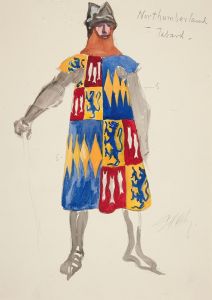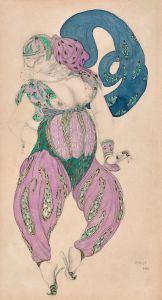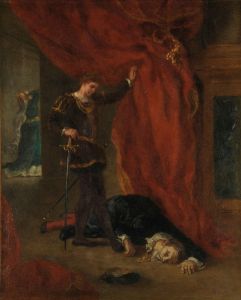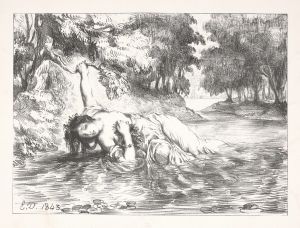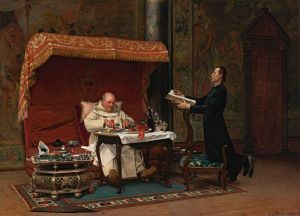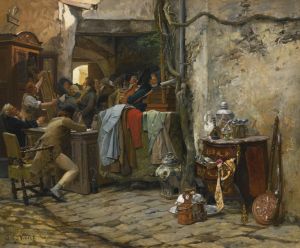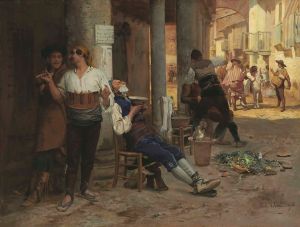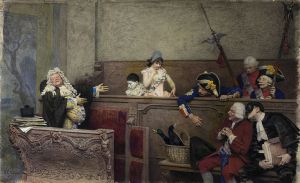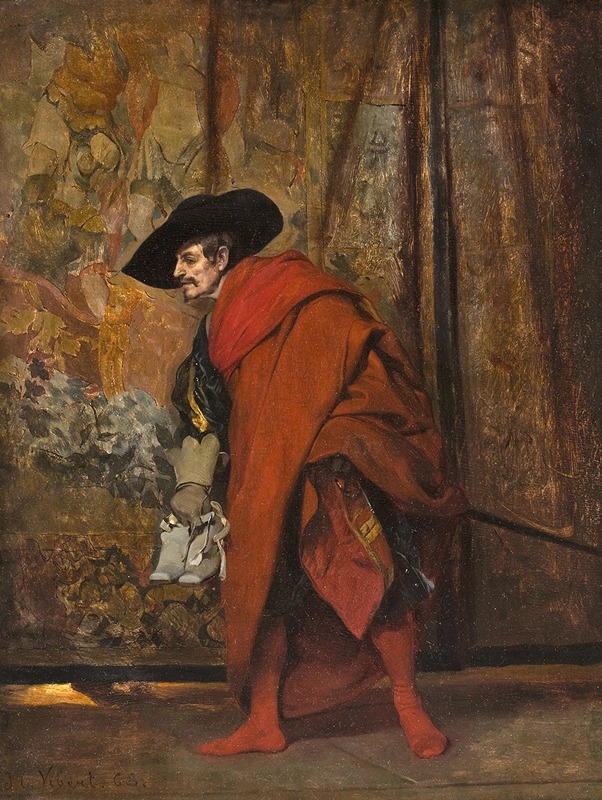
Polonius Behind The Curtain
A hand-painted replica of Jehan Georges Vibert’s masterpiece Polonius Behind The Curtain, meticulously crafted by professional artists to capture the true essence of the original. Each piece is created with museum-quality canvas and rare mineral pigments, carefully painted by experienced artists with delicate brushstrokes and rich, layered colors to perfectly recreate the texture of the original artwork. Unlike machine-printed reproductions, this hand-painted version brings the painting to life, infused with the artist’s emotions and skill in every stroke. Whether for personal collection or home decoration, it instantly elevates the artistic atmosphere of any space.
Jehan Georges Vibert (1840–1902) was a French academic painter known for his satirical and often humorous depictions of clergy and theatrical subjects. One of his notable works, Polonius Behind the Curtain, is a painting inspired by William Shakespeare's tragedy Hamlet. The artwork portrays the pivotal moment in Act III, Scene IV, where Polonius, the Lord Chamberlain of Denmark, hides behind a curtain (or arras) while eavesdropping on a conversation between Hamlet and Queen Gertrude. This scene ultimately leads to Polonius's accidental death when Hamlet, mistaking him for King Claudius, stabs through the curtain.
The painting reflects Vibert's skill in capturing dramatic tension and his ability to bring literary scenes to life through meticulous attention to detail. Vibert's academic training at the École des Beaux-Arts in Paris and his mastery of color and composition are evident in this work. The scene is rendered with a theatrical quality, emphasizing the suspense and irony of Polonius's concealed position. Vibert's use of light and shadow enhances the mood, drawing the viewer's attention to the hidden figure behind the curtain.
While Vibert is primarily celebrated for his satirical depictions of ecclesiastical figures, Polonius Behind the Curtain demonstrates his versatility in tackling themes from classic literature. The painting aligns with the 19th-century European tradition of interpreting Shakespearean drama through visual art, a practice that allowed audiences to engage with the Bard's works in a new medium.
The exact date of the painting's creation is not widely documented, but it is consistent with Vibert's active period as an artist in the late 19th century. The work has been exhibited in various collections and continues to be appreciated for its narrative depth and artistic execution. Like many of Vibert's paintings, it showcases his ability to blend storytelling with technical precision, making it a notable example of his oeuvre.
No further specific details about the painting's current location or provenance are readily available in public records.






